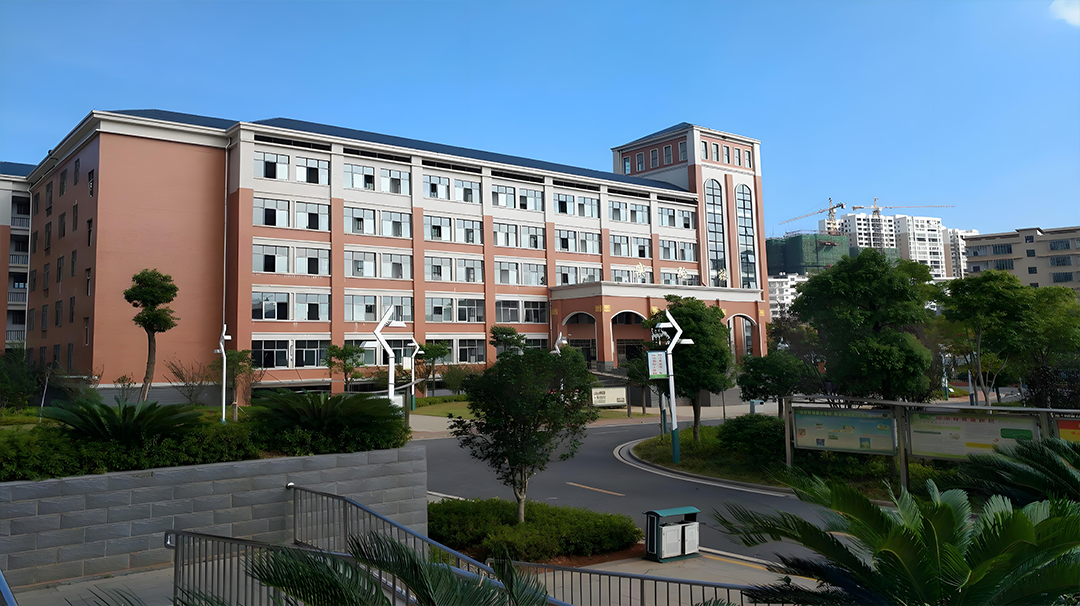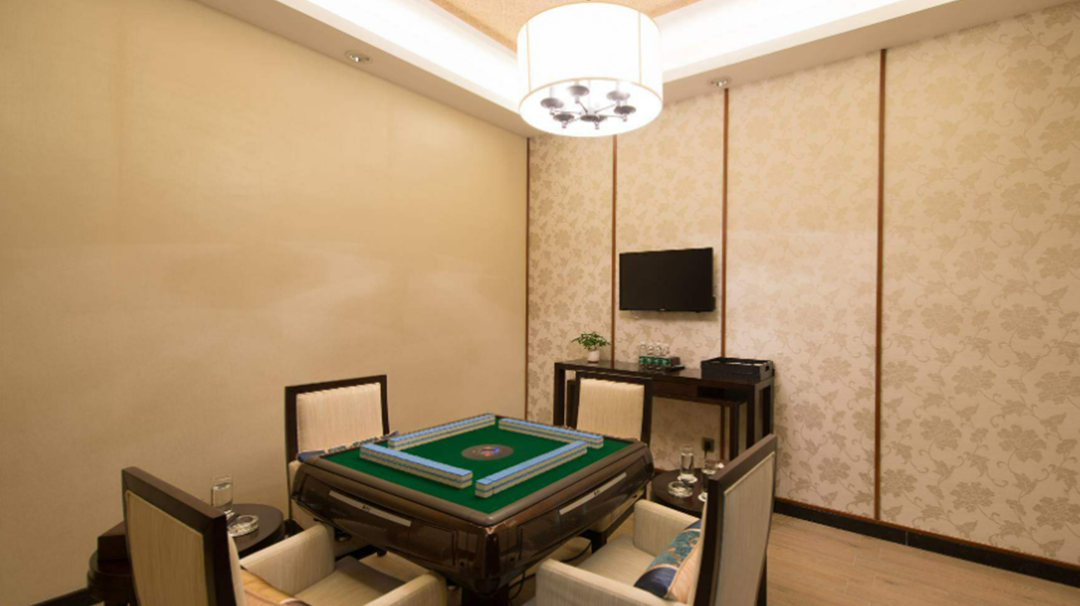
Located at the northern foot of Baoling in Guiyang County, Chenzhou, Hunan Province, Guiyang Longtan Middle School has developed into a modern campus with a total construction area of 41100 square meters and a capacity of over 4000 students since its establishment in 2011. The continuous promotion of smart campus construction and the digital transformation of education and teaching models have posed unprecedented challenges to the campus network of Longtan Middle School in Guiyang. The popularization of new educational scenarios such as remote teaching, online training, and multimedia interaction has made high bandwidth, high reliability, and easy scalability key requirements for campus network construction.
Accumulated problems waiting to be solved: the outdated network restricts the process of teaching innovation
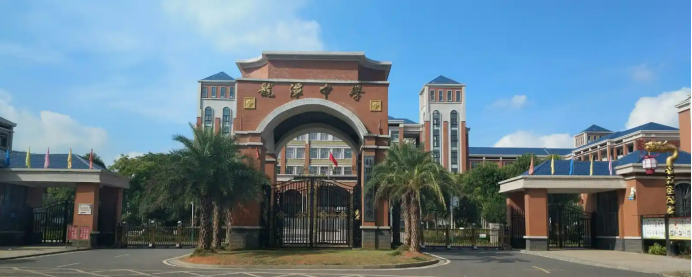
In today's increasingly popular digital teaching, traditional network architectures are no longer able to meet the needs of modern education. The problems of equipment aging, low operation and maintenance efficiency, and insufficient wireless coverage have become bottlenecks that restrict school teaching innovation. Longtan Middle School is facing similar challenges as many other schools before promoting the upgrading and transformation of its campus network. With the deepening of smart campus construction, schools urgently need to build a new network infrastructure that can support modern teaching needs, in order to achieve unified construction and intelligent operation and maintenance management of campus networks.
The original basic network of Longtan Middle School in Guiyang County has been running for many years, and the overall performance and reliability of the network are facing severe challenges, which are reflected in the following aspects:
Firstly, the issue of equipment aging is prominent. Most of the existing network equipment in the school has been running continuously for more than five years, and the overall facilities have entered a period of high failure, making it difficult to meet the growing demand for applications such as remote teaching and online classrooms. What is even more worrying is that some core network equipment has been discontinued for many years, and the original manufacturers have terminated the supply of spare parts and maintenance services for related products, posing serious operational risks.
Secondly, the efficiency of operation and maintenance management is low. The original network lacked a unified intelligent control platform, which could not achieve rapid fault location and risk warning, and daily operation and maintenance work was in a passive state of "firefighting" for a long time. The discovery of network failures often relies on feedback from end users after business interruption, resulting in serious delays in fault response and directly affecting the normal operation of teaching activities.
Thirdly, the wireless network experience is poor. The existing wireless network equipment in the school only supports traditional Wi Fi standards, and the overall technical architecture is relatively backward. In terms of deployment plan, the traditional approach of centralizing AP devices in corridors relies on a single device to cover multiple classrooms and areas in a "one belt, many" mode, resulting in blind spots in signal coverage, poor connection stability, and inability to meet the demand for high-density concurrent access.
These issues not only affect the quality of daily teaching, but also constrain the deepening of school education informatization construction. Especially with the increase of new services such as smart classrooms, standardized exam rooms, and online course tours, traditional networks are no longer able to bear the burden. Each classroom requires access to 2 cameras, 1 jammer, and other devices, which places higher demands on network bandwidth and stability.
Empowering the Optical Network: Smart Connectivity Reshaping the Digital Foundation of Campus
Faced with many bottlenecks in traditional network architecture, Longtan Middle School in Guiyang has chosen to build a new generation campus network system based on all-optical network technology. This transformative solution adopts the PON passive optical network architecture and completely solves the pain points in previous network construction through the construction concept of "one optical network, full coverage".
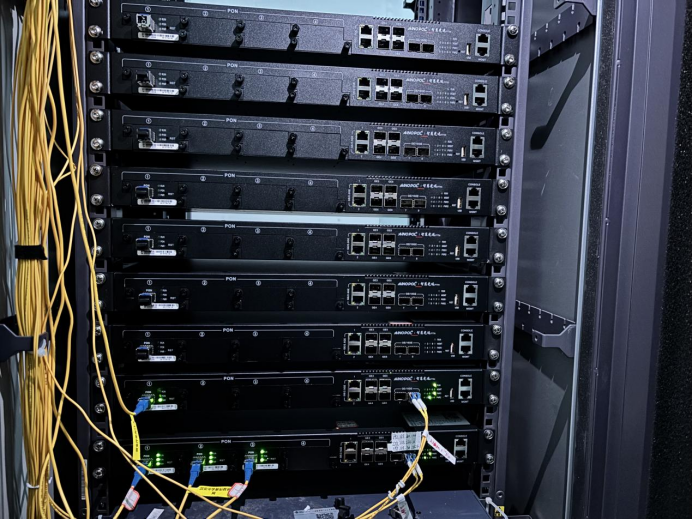
Core layer intelligent control: Deploy high-performance OLT devices at the core layer of the campus network to achieve centralized management and intelligent control of the entire campus optical network. Connect multiple optical splitters through PON interface to achieve comprehensive coverage of key areas such as teaching buildings, experimental buildings, administrative buildings, and dormitory areas, ensuring the stability and reliability of signal transmission.
Access layer full service bearer: Deploy 8-port POE ONU terminal devices in each classroom to provide complete service access capabilities for teaching scenarios. A single fiber optic cable can simultaneously support the access needs of multiple types of devices such as high-definition cameras, IP broadcast speakers, wireless APs, and electronic signage. This not only avoids the tedious process of laying multiple cables, but also achieves an 80% reduction in wiring space.
Extreme simplification at the architecture level: Optimizing the traditional three-layer network architecture into a two-layer minimalist structure, replacing active devices with passive optical components, and reducing overall energy consumption by more than 30%. Fiber optic media has a service life of over 25 years, and the characteristics of non-metallic materials not only ensure lightweight deployment, but also ensure that the transmission process is not affected by electromagnetic interference, greatly improving the security and stability of the network.
Innovation breakthrough in office scenarios: For administrative office areas, an innovative fiber to desktop solution is adopted, and optoelectronic fusion network boxes are deployed below each workstation. A single network box can serve 8 office workstations, providing synchronous gigabit wired network, high-speed wireless Wi Fi, and IP telephone services, completely solving the problems of messy network cables and chaotic device access in previous office areas.
This comprehensive network upgrade and transformation not only solves the existing network problems of Longtan Middle School, but also lays a solid foundation for the development of the school's smart campus in the next 5-10 years.
Advantages of the solution: Empowering the construction of a smart campus with four major characteristics
The all-optical network solution adopted by Longtan Middle School demonstrates four outstanding advantages and provides strong technical support for the construction of a smart campus:
Experience the ultimate speed and enjoy the convenience of 10 Gigabit Ethernet
The newly deployed all-optical network provides schools with a high-speed and stable network connection environment, perfectly supporting various high bandwidth applications such as 4K ultra clear video teaching, cloud collaborative learning, and intelligent classroom management. The core device integrated routing gateway supports 10 Gigabit access capability, ensuring smooth transmission in high concurrency scenarios, even if multiple classes are conducting online interactive teaching at the same time.
Stable transmission, secure and reliable
Compared to the drawbacks of traditional electrical signal transmission that is susceptible to electromagnetic interference, PON all-optical networks use optical fibers as transmission media, which completely immune the signal transmission process to electromagnetic interference, with longer transmission distances and no signal attenuation. This feature is particularly suitable for the campus environment of Longtan Middle School, where multiple buildings are distributed, ensuring that network signals remain stable and reliable in every corner.
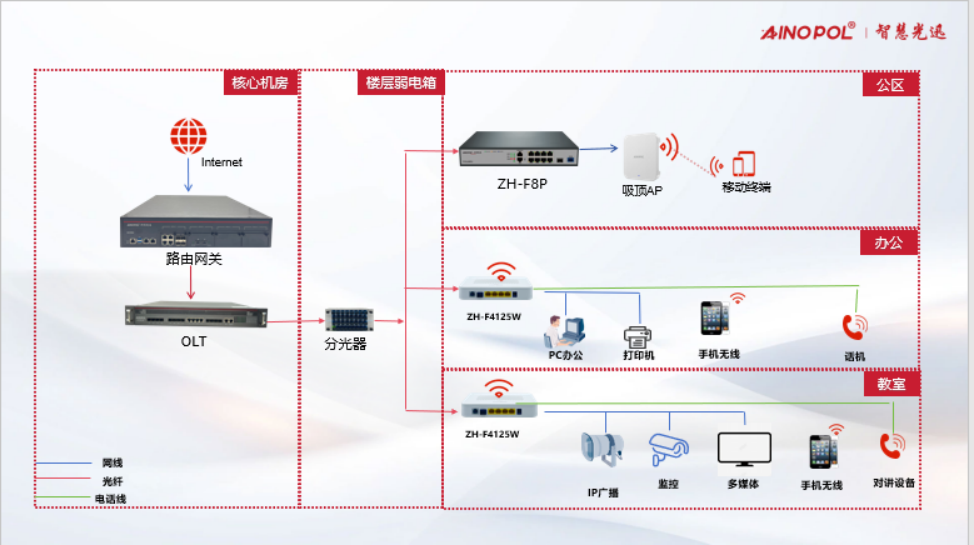
Green and energy-saving, environmentally friendly and low-carbon
The construction of all-optical networks extensively uses non-metallic materials, reducing the consumption of natural resources such as copper. The large-scale use of passive optical devices has reduced the overall power consumption of equipment by more than 30%. During the fiber optic transmission process, there is no need for power supply, effectively reducing campus carbon emissions and supporting the construction of a green campus.
Elastic expansion, oriented towards the future
Fiber optic transmission has the characteristics of low loss and long lifespan, and signals can still maintain high quality during long-distance transmission. This feature reserves sufficient space for the future network expansion of Longtan Middle School, supporting the school to flexibly expand according to development needs and meet the needs of educational informatization development in the next 5-10 years.
Smart Future: All Optical Networks Open a New Era in Education
The network upgrade of Longtan Middle School has laid a solid foundation for the construction of a smart campus. Nowadays, the school has established a backbone network of "OLT+splitter+ONU", realizing the unified construction, operation, and management of the entire school's "one network".
Leapfrog improvement in network performance: The new network adopts an architecture design that achieves 10 Gigabit to aggregation layer and 1 Gigabit to access layer, with high-speed bandwidth ensuring smooth operation of innovative applications such as 4K/8K ultra clear video teaching and VR/AR immersive classrooms.
Intelligent operation and maintenance efficiency doubling: relying on intelligent operation and maintenance systems, centralized management and visual monitoring of network devices have been achieved. ONU devices are plug and play, and operation and maintenance personnel can complete the status monitoring and fault handling of all network devices through a unified platform. The operation and maintenance efficiency has been improved by more than 60%, completely bidding farewell to the traditional "firefighting" operation and maintenance mode.
Significant improvement in economic benefits: The all-optical networking solution has saved schools 30% of comprehensive cabling costs and significantly increased the investment efficiency of network infrastructure. By reducing the number of high-power active devices, the overall energy consumption has been reduced by more than 30%, perfectly in line with the concept of green campus construction.
Network upgrade is just the beginning
Educational innovation is the future
When teachers easily carry out 4K ultra clear remote teaching
When students smoothly experience VR immersive classrooms
When managers achieve intelligent campus operation and maintenance
Longtan Middle School uses a fiber optic network
Paved the way to smart education
Establishing a new benchmark for the digital transformation of rural education
This school in the hills of southern Hunan
Connecting the future at the speed of light
Enable every child to enjoy high-quality educational resources
Breaking the digital divide and illuminating the path to success

